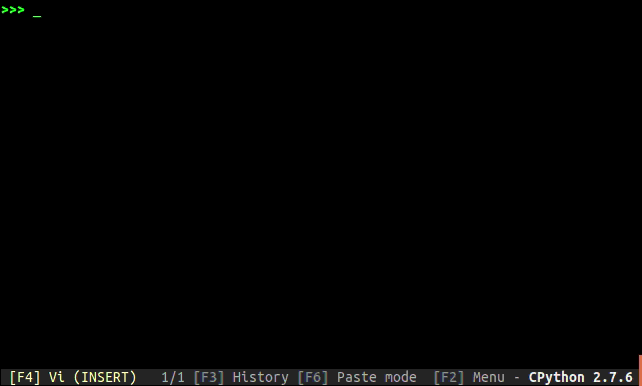Text Progress Bar in the Console [closed]
Python 3
A Simple, Customizable Progress Bar
Here's an aggregate of many of the answers below that I use regularly (no imports required).
Note: All code in this answer was created for Python 3; see end of answer to use this code with Python 2.
# Print iterations progressdef printProgressBar (iteration, total, prefix = '', suffix = '', decimals = 1, length = 100, fill = '█', printEnd = "\r"): """ Call in a loop to create terminal progress bar @params: iteration - Required : current iteration (Int) total - Required : total iterations (Int) prefix - Optional : prefix string (Str) suffix - Optional : suffix string (Str) decimals - Optional : positive number of decimals in percent complete (Int) length - Optional : character length of bar (Int) fill - Optional : bar fill character (Str) printEnd - Optional : end character (e.g. "\r", "\r\n") (Str) """ percent = ("{0:." + str(decimals) + "f}").format(100 * (iteration / float(total))) filledLength = int(length * iteration // total) bar = fill * filledLength + '-' * (length - filledLength) print(f'\r{prefix} |{bar}| {percent}% {suffix}', end = printEnd) # Print New Line on Complete if iteration == total: print()Sample Usage
import time# A List of Itemsitems = list(range(0, 57))l = len(items)# Initial call to print 0% progressprintProgressBar(0, l, prefix = 'Progress:', suffix = 'Complete', length = 50)for i, item in enumerate(items): # Do stuff... time.sleep(0.1) # Update Progress Bar printProgressBar(i + 1, l, prefix = 'Progress:', suffix = 'Complete', length = 50)Sample Output
Progress: |█████████████████████████████████████████████-----| 90.0% CompleteUpdate
There was discussion in the comments regarding an option that allows the progress bar to adjust dynamically to the terminal window width. While I don't recommend this, here's a gist that implements this feature (and notes the caveats).
Single-Call Version of The Above
A comment below referenced a nice answer posted in response to a similar question. I liked the ease of use it demonstrated and wrote a similar one, but opted to leave out the import of the sys module while adding in some of the features of the original printProgressBar function above.
Some benefits of this approach over the original function above include the elimination of an initial call to the function to print the progress bar at 0% and the use of enumerate becoming optional (i.e. it is no longer explicitly required to make the function work).
def progressBar(iterable, prefix = '', suffix = '', decimals = 1, length = 100, fill = '█', printEnd = "\r"): """ Call in a loop to create terminal progress bar @params: iterable - Required : iterable object (Iterable) prefix - Optional : prefix string (Str) suffix - Optional : suffix string (Str) decimals - Optional : positive number of decimals in percent complete (Int) length - Optional : character length of bar (Int) fill - Optional : bar fill character (Str) printEnd - Optional : end character (e.g. "\r", "\r\n") (Str) """ total = len(iterable) # Progress Bar Printing Function def printProgressBar (iteration): percent = ("{0:." + str(decimals) + "f}").format(100 * (iteration / float(total))) filledLength = int(length * iteration // total) bar = fill * filledLength + '-' * (length - filledLength) print(f'\r{prefix} |{bar}| {percent}% {suffix}', end = printEnd) # Initial Call printProgressBar(0) # Update Progress Bar for i, item in enumerate(iterable): yield item printProgressBar(i + 1) # Print New Line on Complete print()Sample Usage
import time# A List of Itemsitems = list(range(0, 57))# A Nicer, Single-Call Usagefor item in progressBar(items, prefix = 'Progress:', suffix = 'Complete', length = 50): # Do stuff... time.sleep(0.1)Sample Output
Progress: |█████████████████████████████████████████████-----| 90.0% CompletePython 2
To use the above functions in Python 2, set the encoding to UTF-8 at the top of your script:
# -*- coding: utf-8 -*-And replace the Python 3 string formatting in this line:
print(f'\r{prefix} |{bar}| {percent}% {suffix}', end = printEnd)With Python 2 string formatting:
print('\r%s |%s| %s%% %s' % (prefix, bar, percent, suffix), end = printEnd)
tqdm: add a progress meter to your loops in a second:
>>> import time>>> from tqdm import tqdm>>> for i in tqdm(range(100)):... time.sleep(1)... |###-------| 35/100 35% [elapsed: 00:35 left: 01:05, 1.00 iters/sec]